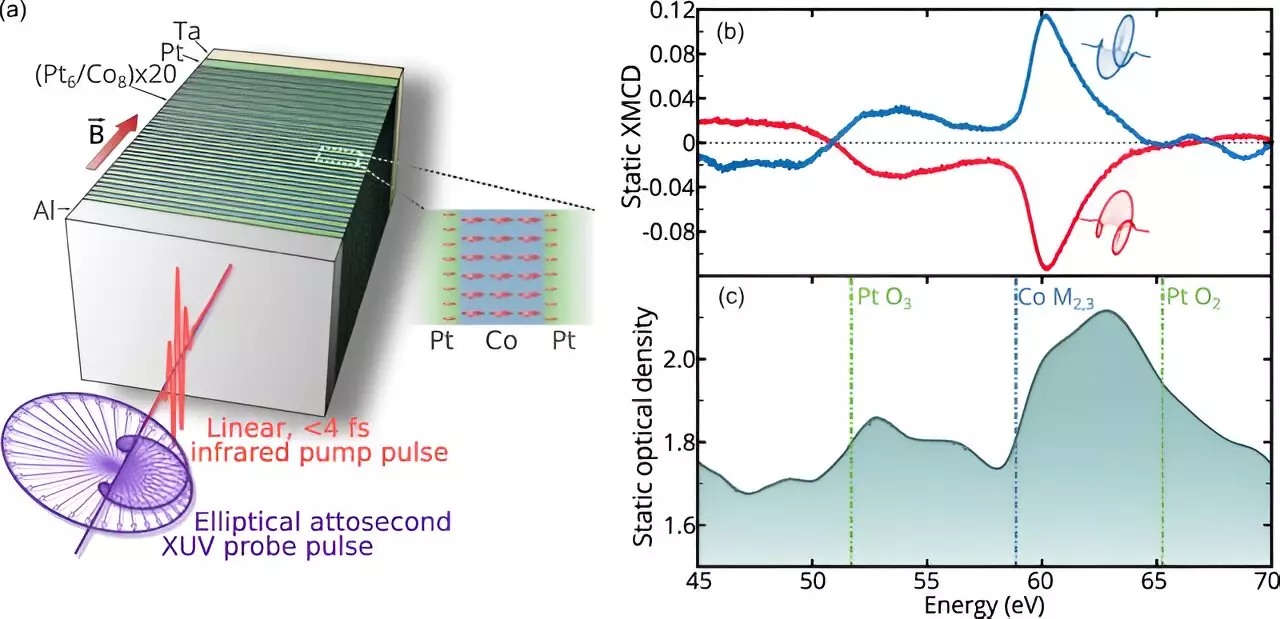

Spin currents, a fascinating concept in the realm of condensed matter physics, represent a mechanism whereby electrical flow is driven not just by the charge of electrons, but by their intrinsic angular momentum—spin. This innovation in electronic transport offers potential breakthroughs for the efficiency and speed of future electronic devices. Unlike traditional electrical currents, which often lose energy through resistive heating, spin currents promise a more energy-efficient alternative, potentially revolutionizing how we design and implement technology. Recent research spearheaded by an international team of physicists has unveiled a method for generating spin currents using ultrashort laser pulses—an exciting development that shades new light on the practical application of spintronic devices.
The researchers’ work, detailed in the journal *Physical Review Letters*, represents a significant departure from previous methodologies. Historically, generating spin currents with lasers involved intricate setups where the laser first generated electrons, often leading to mixed orientations that required additional filtering. This process was riddled with inefficiencies that hampered practical applications. In contrast, the innovative approach developed by the team directly generates spin currents aligned in the same direction using a linearly polarized laser pulse combined with a circularly polarized probe laser.
At the core of their experiment is a carefully constructed target block consisting of 20 alternating layers of platinum and cobalt, each with a mere thickness of a nanometer. This staggering level of precision is crucial in manipulating the magnetic properties of these materials. By applying a strong magnetic field perpendicular to the layers, the physicists were able to align the spins of the electrons within this layered configuration. Following this, the implementation of ultrafast laser pulses set in motion a rapid transformation of the electron spins, demonstrating an efficiency that outstrips prior techniques.
The implications of these findings extend far beyond academic interest. As the researchers discovered, the ultrafast laser manipulations resulted in immediate changes to the magnetic ordering within both layers of the block. These changes carry significant potential for practical applications; efficient and controlled manipulation of spin currents could lead to devices that operate at unprecedented speeds while consuming considerably less power. The promise of spintronic devices might soon transition from theoretical discussions to practical realities, paving the way for advancements in computing, memory storage, and data processing technologies.
As this research unfolds, one can only speculate about the transformative potential it holds for technology. By eliminating inefficiencies traditionally associated with generating spin currents, this team has laid the groundwork for future innovations in spintronics. The direct generation of aligned spin currents through advanced laser techniques represents a significant leap forward, inviting further investigation into the many possibilities that lie ahead. The quest for faster, more efficient electronics is a challenge that the world is eager to meet, and the evolution of spintronic devices may very well be a cornerstone in this exciting journey.
Rogue waves have long been a subject of fascination and terror in maritime lore. These…
As the world grapples with public health challenges, especially those posed by infectious diseases, the…
The Sombrero Galaxy, also known as Messier 104, embodies a breathtaking blend of spirals and…
In recent advances in quantum electronics, a groundbreaking discovery leveraging the concept of kink states…
In the intricate tapestry of nature, ice often exists in a delicate balance with liquid…
In an astonishing event that captured global attention, a rogue object from beyond our Solar…
This website uses cookies.